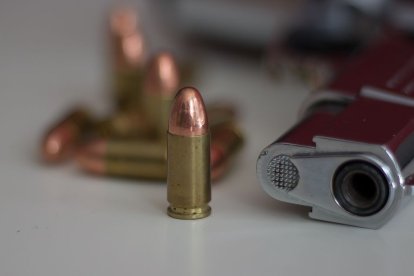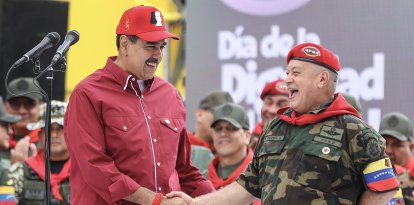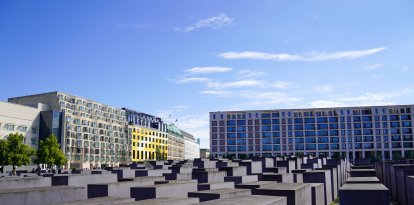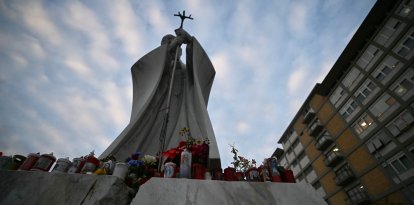The unpunished ascent of Tren de Aragua
The Venezuelan mega-gang has a presence in several locations in the United States, as well as throughout South America and in several Central American countries.

(Pexels)
A few days ago, national headlines read that in New York, members of the criminal gang Tren de Aragua were rampaging through the streets, violently stealing cell phones from innocent bystanders. Squads of people riding motorcycles would snatch phones from the streets of New York and take them to Tren de Aragua safe houses.
The hackers at their service, according to The New York Post, carry out transactions with stolen cell phones until they empty the victims' bank accounts, exhaust cash applications and carry out fraudulent transactions in the United States and South America. Then, the phones are cleaned and sold by members of the same organization. New York police even tried to alert citizens by releasing a video of a woman being dragged down a Brooklyn street by these criminals. Authorities have been able to link the increase in local crime with this Venezuelan mega-gang, which seems to be moving its operations into the United States as its members cross the southern border to request asylum.
Tren de Aragua has a presence in several locations in the United States, as well as throughout South America and in several Central American countries. It is the region's fastest-growing criminal organization and one of the most violent. Treating the story of Tren de Aragua as a simple police case is leaving aside the powerful social and economic reasons that explain its growth and impunity, as well as its suspicious political connections. It is a story about the expansion of a criminal power supported by the Chavista dictatorship's need to have parapolice violence in its favor, and a story about the lack of border control in neighboring countries that served as a breeding ground for multinational crime. It is a story as exciting as it is terrifying.
Origins
The gang was born in Aragua, one of the 23 states in the Bolivarian Republic of Venezuela, in the center-north of the country. It began around 2010 with the construction of train rail in the Aragua region as part of the Socialist Railway Development Expansion Plan in Venezuela. The main leaders: Larry Changa, Héctor "El Niño" Guerrero and Johan Romero (John Petrica), organized to carry out criminal and extortion activities surrounding the construction of the train system.
The organization grew in parallel with the conversion of Venezuela into a failed state. Hugo Chávez became president in 1998, and until his death, he dedicated himself to building a narco-tyranny that radiated its power to the rest of the region. His policies on security and his rhetoric that victimized criminals fostered chaos and was co-opted by the judiciary that was soft on organized crime. As a result, crime skyrocketed under Chávez. In 1999, there were 25 homicides per 100,000 inhabitants. By 2014, that figure rose to 64, according to the World Bank, but there are other studies indicating that this figure could be upwards of 80.
Tren de Aragua is different from other groups in the region, as it is dedicated to an almost infinite portfolio of crimes, even providing services to other criminal organizations in the rest of the world. Its connection with the Bolivarian regime also allows it to generate profits from selling food products and obtaining quotas in negotiations of mining and sports contracts. The gang participates in official activities with authorities and is ingrained in the institutional fabric through organizations like the Somos el Barrio JK Foundation, which receives monetary support from the state.
The gang is relatively new compared to the other criminal organizations in the region, but shortly after its founding, it took control of San Vicente, a town in the state of Aragua with a strategic location due to its access to a lake, an airport and a highway that connects it with a very important port in Venezuela. Its members came to decide on the most detailed aspects of life in San Vicente, from housing to public transportation to justice between neighbors. Many businesses closed due to not being able to pay for “vaccines,” the gang's term for its extortion costs, which it exchanges for security in commerce and industry. Women also became victims, since sex trafficking is one of the gang's strengths. Recruitment is constant through beauty pageants and modeling agencies, with promises of trips to the U.S. or other countries. Extortion is something the gang has brought to all the countries where it settles, but the majority of its victims are Venezuelans.
Tren de Aragua is not exclusively dedicated to drug trafficking or kidnapping. It is adaptive. In this sense, researchers maintain that “Tren de Aragua is a case study on criminal governance. This is a gang that has become a transnational criminal army and a violent substitute for the state in communities where legitimate institutions have abandoned their duties.” According to research, the gang's model more resembles Central American "maras" (gangs), and is unlike other criminal groups such as Mexican cartels or Colombian guerrilla groups formed in armed subversion. Tren de Aragua manages drug trafficking corridors to the Caribbean islands in the state of Sucre, controls the gold mines in the south of Venezuela and traffics people and goods across the borders of Colombia and Chile. Most of the money the gang earns is sent to Venezuela.
"El Niño" Guerrero: When Nicolás Maduro became president, the gang problem was aggravated by the “peace zones” policy that was implemented in 2013 to stop the outbreak of violence. This policy consisted of areas where police operations and presence were prevented in exchange for gangs abandoning their weapons and illegal activities. Of course, the plan failed, and the criminal groups, left to their unpunished governance, improved recruitment and economic power. Aragua was one of those “peace zones” and there, Héctor Rusthenford Guerrero Flores, better known as "El Niño" Guerrero, when he was just 21 years old, murdered a police officer, beginning his meteoric rise as a criminal leader. He was sentenced to 17 years in prison for that and other crimes. El Niño did not found Tren de Aragua but came to lead it when José Álvarez Rojas, alias "Chino Pradera," who founded the gang a couple of years earlier, died in 2016 during an armed confrontation.
The gang bears the name Tren de Aragua because many of those who worked on the construction of the Aragua state train were members of a union that extorted contractors, trafficked jobs at construction sites, etc. Consequently, the gang's incipient version began to be known by that name. Some of its members ended up imprisoned in the Tocorón prison. Among them was Héctor Rusthenford Guerrero, who escaped, was recaptured and began to gather prisoners, some members of the union. From there, he consolidated the criminal organization. The governor at that time was Tareck El Aissami, later president of Petróleos de Venezuela and one of the pillars of Maduro's dictatorship.
While behind bars in Tocorón, El Niño Guerrero became the leader of a "pranato," a form of Venezuelan prison mafia whose leaders are called "pranes." The pranatos are key to understanding the culture around crime. Since the pranes are millionaires, they control the prisons and live in luxury as they develop their businesses. They have drug labs, golf courses, water parks, casinos, swimming pools, beauty services, motorcycle sales, gyms, religious centers, playgrounds, nightclubs and, of course, armories where they accumulate and trade weapons. From the pranatos' prison offices, prostitution, trafficking, drugs, kidnappings, extortion and all types of scams are orchestrated. Pranes like Niño Guerrero can only rise to power due to complicity with local and national authorities, obviously. Such complicity is evident in compelling examples such as the help that Guerrero provided to Nicolás Maduro to fiercely attack those who participated in the 2017 protests against the regime. The complicity is glaring in the suspicious conditions of Guerrero's escape.
The escape
Tren de Aragua began to expand outside the prison, and then they expanded to the rest of the country. This coincided with the administration of Tarek El Aissami, who later became vice minister of prevention and citizen security, minister of the interior, vice president of the republic and vice president of the United Socialist Party of Venezuela (PSUV). When Tren de Aragua's power and reach became a major scandal, the Maduro government decided to “intervene” in the prison. The intervention occurred in September 2023 with the so-called “Cacique Guaicaipuro Liberation Operation” that sought to regain control of the prison, but which in reality served to allow 500 prisoners to escape from Tocorón, among them Niño Guerrero, who is believed to have fled to Peru. Weapons of war, Bitcoin mining rooms and even a zoo were found inside the prison walls.
Eleven thousand officers were needed for the operation, although it by no means was a surprise attack. The prisoners were warned in advance and escaped through the tunnels, which they used to enter and exit as they pleased. During the inspection, police indicated that there were also motorcycles, a playground, ice cream parlors, restaurants, a baseball stadium and a nightclub called Tokyo.
The Venezuelan Prisons Observatory warned of the number of escaped inmates and pointed out that behind the “intervention” in Tocorón, there was a pact between the leader of Tren de Aragua and authorities. El Niño Guerrero left the prison days before the intervention. Curiously, General Remigio Ceballos, who was in charge of the operation, described it as "successful" and detailed that they had requisitioned the weapons that the prisoners had stored, a fact later confirmed by Nicolás Maduro. However, he forgot to detail that the weapons were in boxes with seals of the Bolivarian National Guard. The OVP also wondered how if the prison had a population of more than 5,500 prisoners, during the intervention there were only 1,500 left.
Larry Changa, co-founder of Tren de Aragua, born Larry Amaury Álvarez Núñez, lived for years in Chile with no criminal record. After leaving Tocorón, he was in charge of bringing the operations of Tren de Aragua to Chile. In 2015, he was reported dead or missing in his native Venezuela, but three years later he reappeared with his real name when he entered the country, without any criminal background that alerted authorities. He settled in Santiago, Chile, with his wife, where he established different businesses and an exchange house to launder money. He even obtained temporary residence and an RUT as a foreigner. In 2021, he acquired several vehicles linked to investigations into homicides committed in Santiago, though he was still not on the authorities' radar. He was eventually summoned by the Homicide Brigade at the beginning of 2022. In front of authorities, he acknowledged being a member of Tren de Aragua and being related to Antonio Álvarez Cisneros, better known as "El Potro," a famous Venezuelan baseball player and reggaeton singer, who between 2014 and 2015 was Nicolás Maduro's sports minister, but who was now just a law-abiding entrepreneur and regretful of the past. Chilean authorities, incredibly, released him, perhaps in ignorance of the organization's danger, perhaps due to the ruling ideology.
Larry Changa, seeing that he was exposed, took a flight to Colombia. When he arrived to Bogotá, authorities prevented him from entering, so he returned to Chile, and from there he left secretly for Bolivia through Colchane. Since then, his whereabouts have been completely unknown. According to various media reports, since the beginning of 2023, Carabineros, a Chilean law enforcement agency, has had suspicions that Changa is in command of Tren de Aragua in Chile. Kidnappings have increased in the country, especially in Bío Bío where it was reported that instructions on what to do with victims were given by a certain "Larry Changa." One of the examples was that of a Venezuelan merchant, kidnapped in Los Vilos. The victim was transferred to Valparaíso, the region where Changa supposedly resides, or in the vicinity of the Coquimbo region where Tren de Aragua have reportedly begun trafficking marijuana planted in the dry coastal area.
Immigration
In view of its international expansion that began in Colombia, Peru, Ecuador, Chile, Bolivia, Brazil, Panama and more, Tren de Aragua began to use the route still taken by Venezuelans to flee the misery and oppression of the Maduro regime, which deepened in 2014. Operating in Venezuela was no longer profitable due to the extreme poverty that reigned in the country. According to researcher Ronna Rísquez, author of the book "El Tren de Aragua: The Gang that Revolutionized Organized Crime in Latin America" (in Spanish: "El Tren de Aragua. La Banda que Revolucionó el Crimen Organizado en América Latina"), "Migrants have become [the gang's] first victims." She says the 2017 crisis was a key moment: "It was the year of greatest political, social and economic conflict in the country, and when the third great migratory wave began ... In its internationalization, the mega-gang followed the route of Venezuelan migrants." According to Rísquez, in the case of the United States, some members of Tren de Aragua settled in the state of Florida and have opened evangelical churches from where they receive financial aid. The great potential of the U.S. market calls for criminal gangs to relocate to where there are more resources.
A widely cited example that raised alarms occurred precisely in 2017, when a Spanish citizen living in Venezuela was kidnapped in Aragua and held for a ransom of 500,000 euros (roughly $550,000). The Spanish Civil Guard and the FBI, who were looking for the Spaniard, discovered that the extortion calls were made from Tampa, Fla. The caller was a Venezuelan citizen, a resident in the United States, who had an extensive criminal history in his country of origin, Spanish newspaper El País reported. The Spaniard spent 38 days in captivity in a forested area and assured that he was permanently guarded by 20 armed men.
Due to this situation, Interpol has warned that El Niño Guerrero may have fled to the United States among the millions of immigrants who have entered the country Since Joe Biden assumed the presidency. Authorities have no doubt that other Tren de Aragua members have infiltrated the country.
According to a BBC article, at the dawn of its expansion, Tren de Aragua sent its members to the border of Brazil, to the coasts of Aruba, Curacao and Bonaire and to the border with Trinidad and Tobago. They reportedly controlled illegal trafficking to the Caribbean islands and also sent members to the south of Venezuela where they maintained a criminal presence in Las Claritas, which contains the fourth most important gold deposit in the world near the border with Brazil. The report also maintains that they began to sell weapons to the Brazilian gang Primeiro Comando da Capital, which supposedly came from the Venezuelan military.
The gang is also present in Colombia. A video where two people torture and kill an immigrant served as evidence for Bogotá police to capture "Alfredito" and "Capi," two Tren de Aragua members who, according to Colombian authorities, fought with other local gangs for control of the territory. Currently, Tren de Aragua is consolidated in several U.S. cities such as Chicago and Miami. In El Paso, Texas, on the border with Mexico, at least 38 members of the gang were arrested in 2023, according to CNN. Yurwin Salazar, another of its members, was charged with the death of José Luis Sánchez Valera, a retired Venezuelan police officer who lived in south Florida. In Chicago, Edwin Camejo was arrested while selling drugs to an undercover police officer. It is certain that operations are already widespread in other American cities.
There were various arrests of members of the organization in Colombia and Peru starting in 2018, but at that time they began to descend en masse from Bogotá through Ecuador to Chile. Starting in 2019, they took control of roads and border crossings between Venezuela and Colombia. Taking advantage of the closure of the border and the massive passage of Venezuelans fleeing the narco-dictatorship, the gang used is control of the border to collect tolls and also transport stolen merchandise and drugs.
In 2022, Peruvian police arrested five heavily armed members. One of those arrested was Edison Agustín Barrera, alias “Catire,” who admitted to having committed six homicides in Peru. Shortly after, local police arrested four other Venezuelans in an apartment in Lima, also related to the gang. In the same town, a prostitute was filmed in February 2023 pleading for her life before being shot 31 times at point-blank range with as a message to other gangs that Tren de Aragua wanted to replace local prostitutes with Venezuelan women. On Feb. 8, the Peruvian justice system issued a 12-year prison sentence for Roberth Alfaget Paz Esqueda, a Venezuelan citizen linked to Tren de Aragua, for the crime of sexual exploitation of two Venezuelan women aged 19 and 15.
The gang establishes its presence communities using excessive violence, shooting prostitutes controlled by rival gangs and carrying out live executions on social media. Tren de Aragua has used the migratory wave to hide among legitimate asylum seekers in such a cruel and open way that, in Texas, authorities documented gang members charging their fellow Venezuelans to use bathrooms among other services.
NYPD Chief of Detectives Joseph Kenny revealed that the cell phone thieves who were arrested are members of the Tren de Aragua that were living in immigrant shelters. The gang's members cross the border, request asylum and head to New York where they recruit other immigrants in shelters. The FBI reported that gang members send a message on WhatsApp saying: "I need phones. I have dollars. I am available. Go get them." They also extort Venezuelans by demanding they pay bribes in exchange for protection and even to cross the border from Venezuela to Colombia and from Mexico to the United States.
Recently, Tren de Aragua members were arrested after attacking police in Times Square. Wilson Juárez and Kelvin Servita-Arocha were detained by Immigration and Customs Enforcement. Eight immigrants have been charged in a January attack on two NYPD police officers in Times Square. The NYPD recently issued warnings about the South American gang infiltrating the city after its members infiltrated the country seeking asylum, only to take up residence in the city. According to a New York Post report on Wednesday, National Guard troops, who patrol migrant shelters in New York, were urged to keep an eye out for distinctive Tren de Aragua tattoos on incoming asylum seekers.
Policies promoting uncontrolled immigration have been vital for the growth of Tren de Aragua, and without a doubt, they harm the innocent, even those who flee from the violence that has taken hold in their countries. In the region, crime co-governs with the dictatorships. The policies of the entire continent, not just open complicity with organized crime, has allowed the exponential growth of Tren de Aragua in a very short time, and it seems difficult for anyone to dare to confront them.
RECOMMENDATION





















